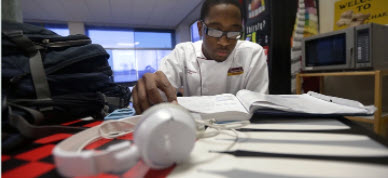Part-Time Students
Section 1. Introduction
SRJC is designed for the success of full-time students, and gives the message that students should be full-time. Furthermore, students who attend the community college have varied goals, from preparation for a four-year degree and graduate work to career development, workforce preparation, career education and personal development. However part-time students comprise 75% of SRJC students, and has for decades. While full-time students do not show disproportionate impact, part-time student do. The disproportionate impact is different among groups within part-time students as well. Within the very recent past, some eligibility requirements have been changed to make more financial assistance available to part-time students.
Why It Matters
Due to many reasons, including work, family obligations, learning styles and other reasons, students choose or are obliged to attend part-time. The college needs to face the reality that most students are part-time and that will not change. With some exception (DRD and EOPS), the college is not designed for the success of part-time students, from services to instruction. Without changes in practices, policies, and attitudes, part-time students will continue to achieve at lower rates than full-time students, and the college will not attract and retain as many students, thus not fulfilling the promise of social and economic mobility for which the community colleges are known.
Aims and Objectives
The aim of this inquiry is to identify the college’s systems, policies and culture creates obstacles and barriers to the success of part-time students. The method of exploration will include examining the DI groups within part-time students and the identification of both risk and success variables for part-time students at the college.
The ultimate aim of this research is to change the college to be inclusive as a part-time student success ready college.
- Support systems
- Changing mindset/culture/awareness
- Changing actual systems of delivery
A. Problem Statement
Persistence and completion rates are lower for part-time students compared to full-time students at SRJC.
B. Research Question(s)
- How does utilization of Counseling impact credit part-time students’ persistence and completion compared to part-time students who do not utilize the services?
- Does this vary among population groups?
- Does it vary based on types of utilization?
Section 2. Research Methodology
A. Data Sources
B. Data Definitions
- Part-Time Student: any student enrolled in fewer than 12 credit units at census date (except DRD students, who is considered part-time with fewer than 9 credit units at census)
- Completion: successful completion of a course (A, B, or C)
- Persistence: Enrolling the following semester/year
- Retention: remaining in a course until end of term (includes D, F) (not including W's and EW's)
- Utilization of Counseling: 1) Attended a Counseling session, or 2) Received an abbreviated Educational Plan, or 3) Received a comprehensive Educational Plan